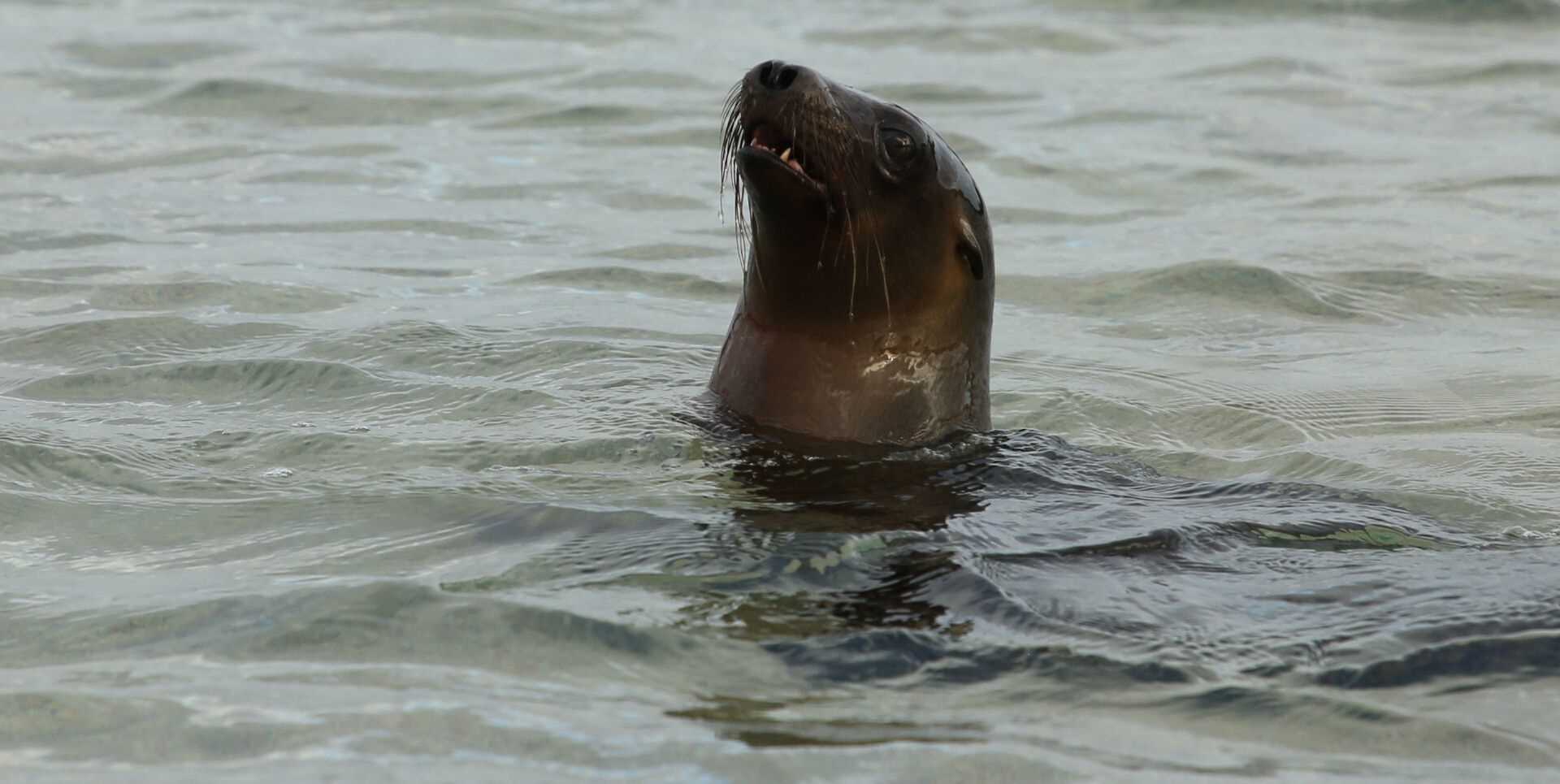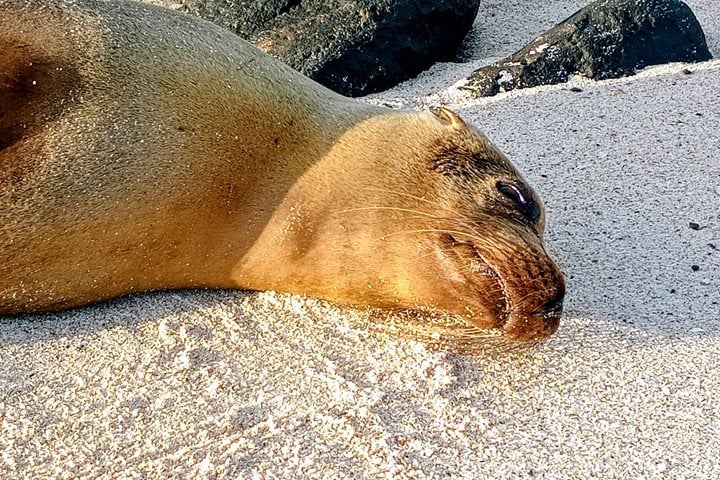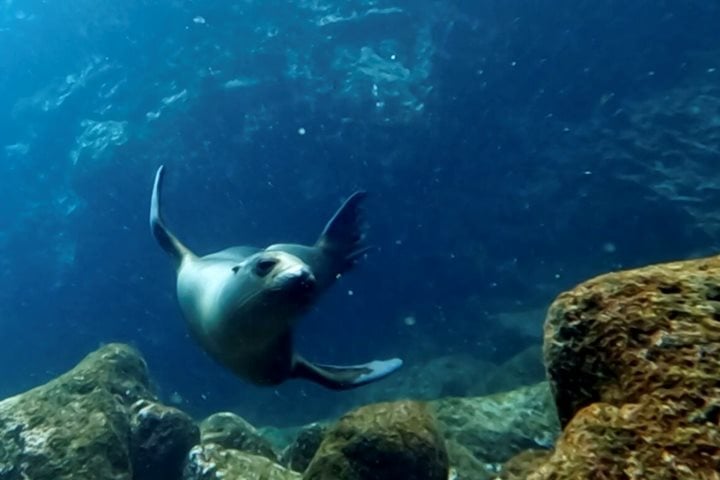Today we woke up anchored at Floreana Island, a unique island by the south of the archipelago. We started our day early with some activities: kayaking and a wet landing at Post Office Beach. Here our guests continued a tradition of hand delivery of mail. Whalers started the system in the 1800s, and it continues today.
Our day continued with two amazing snorkels in two satellite islets of Floreana, Champion and Devil´s Crown. Diversity is amazing in these spots due to their locations in the middle of ocean currents, which create optimal conditions for all sorts of marine life. Finally, to close a wonderful day, we concluded with a short walk over Cormorant Point. This peninsula located on the north side of the island holds a great diversity of wildlife, from pink flamingos to striking Galapagos sharks!







